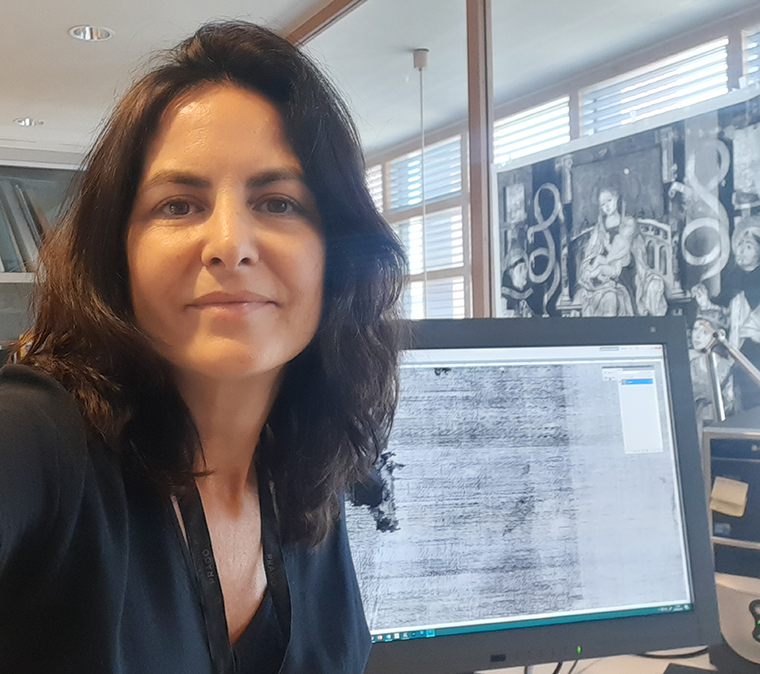Last month, the University of Seville and the Museo Nacional del Prado announced the release of Aracne, a new software program that promises to revolutionize art authentication via science. Aracne is brilliantly named, as it uses the fabrics most commonly used in easel painting to help determine provenance and the relationship of a work to others. Best of all, this program is free to anyone who wants to use it. Observer recently caught up with Dr. Laura Alba of the Prado to hear more about its development and goals.
What was the impetus that led to the development of Aracne?
I work in the Technical Study of Artworks Department at the Prado, where we identify the materials and procedures used to create artworks. Until now, these studies have focused on analyzing the preparation layers, painting layers, and panels. While these techniques were advancing, the methodology for studying canvases had not evolved. The certainty that it was possible to study canvases more effectively—and the importance of the data such studies could yield—encouraged us to develop Aracne.
Why did the Prado decide to develop this software? Was it simply that your museum has a wealth of paintings that would benefit from it?
One of my tasks at the Museo del Prado is to typify canvases. In the Prado’s collection, canvas studies are conducted using X-rays, since the majority of the paintings have been “recanvased” (a new canvas was adhered to the reverse to provide structural support). This is why X-rays are the only technique that allows us to observe the original fabric when a painting has been recanvased. As a specialist, I was aware that analyzing canvases directly from X-rays presented certain difficulties and limitations. I also believed that fabric analysis—especially in a collection as large as the Prado’s—could yield crucial findings in historical studies of artworks.
SEE ALSO: Taipei Dangdai Director Robin Peckham Talks Art, Ambition and Taiwan’s Global Rise
Additionally, earlier results in automatic thread counting encouraged me to begin this project. That is why I contacted the Escuela Técnica Superior de Ingeniería in Seville and suggested to Dr. Juan José Murillo that he develop software to typify canvases at the Prado in a precise and reliable way.
Could you get into some of the technical aspects of how it works?
To use Aracne, you need a 1:1 scale image in which the fabric is visible. In most of the Prado’s works, we use X-rays, but you could also use any image where a simple fabric weave is visible. Once the image is uploaded into the program, Aracne applies frequency analysis to automate the thread-counting process across the image. The program also includes a power spectral density (PSD) analysis to typify the entire canvas. These two tools provide a set of data that allows specialists to identify the fabric by counting vertical and horizontal threads, analyzing distribution histograms, measuring inclination, generating PSD graphics, and more. Current research lines suggest that thread counting results will improve further thanks to A.I.
The name is wonderful, and the mythological origins are not lost on me. How did you arrive at it?
Yes, the name is wonderful. When Juan José and I started working on the software, we weren’t specifically thinking of a name. The University of Seville initially sent me a long, very technical name that I don’t even remember now, and that’s when we realized we needed something shorter and more representative. At the Prado, the myth of Arachne is very present thanks to the fascinating painting The Spinners by Velázquez. While discussing it with my coworkers, we realized we had found the perfect name for the program.
Your press release says that Aracne has already “yielded significant results, both regarding the attribution, dating and provenance of works and the relationships established between them.” What kind of results have you seen from Aracne so far?
Thanks to Aracne, we can compare canvases precisely and clearly to help determine if they come from the same piece of fabric, and even whether they were cut side by side. Painters bought large pieces of canvas that they cut according to the needs of their commissions. That’s why, when Aracne finds matches in the canvases of two paintings, we can determine whether they originated in the same workshop and were created around the same time—details that are extremely relevant for us. Aracne has enabled us to place the creation of Adam and Eve and The Rape of Europa by Rubens in Madrid, to attribute The Artillery General to Herrera el Mozo instead of Francisco Rizzi and to date the portraits Anne of Austria and Philip II by Sofonisba Anguissola to 1573. Aracne is now part of the Prado’s technical studies for both temporary exhibitions and long-term projects, such as the technical studies of Velázquez.
Aracne is free for anyone to use. What went into that decision?
Both Juan José and I, as well as the two institutions we work for—Seville University and the Museo Nacional del Prado—believe in making it freely available to facilitate technical studies at any institution and advance the collective knowledge of art history.
What potential do you see for Aracne? Would it be too bold to say it may change art history as we know it?
I believe Aracne has enormous potential—not only for studying canvases in depth, but also for use in completely different fields. While I do consider it important, I wouldn’t go so far as to say it may change art history. However, we now have a new tool that actively contributes to our study methodology. And having an open-access tool that allows studies under the same conditions across different collections provides unique opportunities for collaboration. Aracne’s future is promising.

